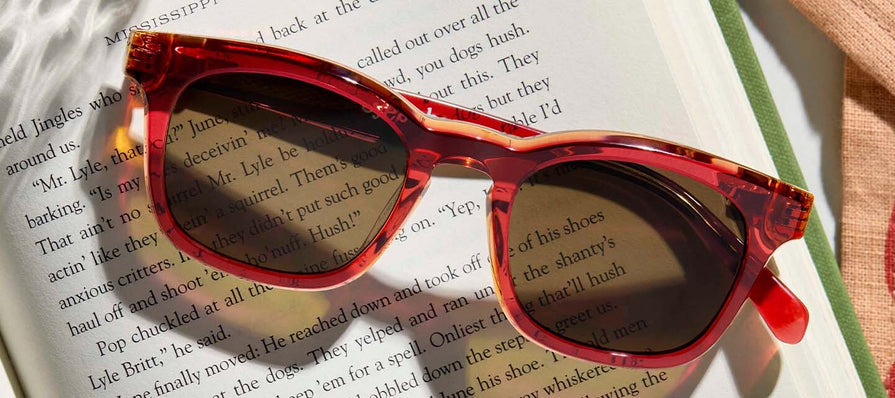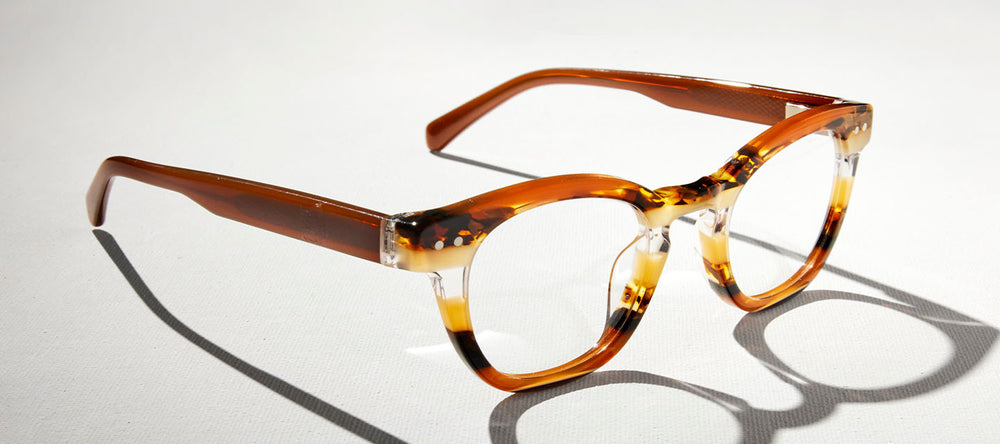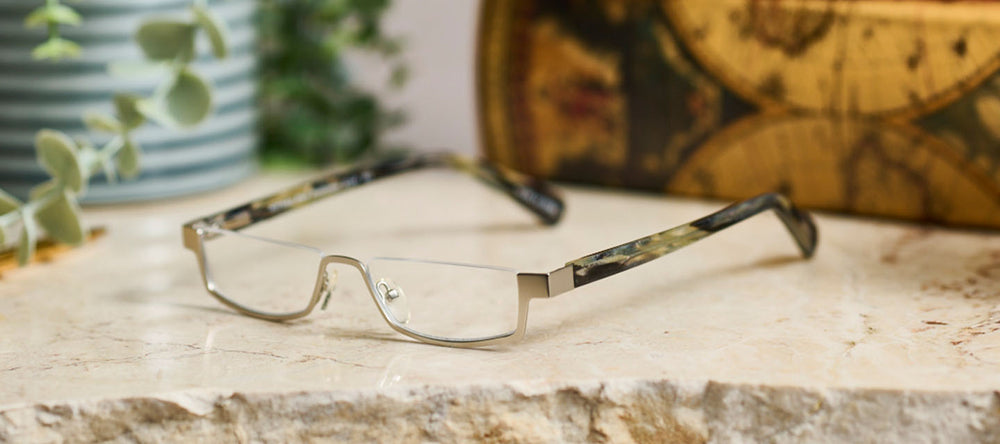If your up-close vision leaves something to be desired, welcome! We’re glad you’re here, and you will be too once you see our rather epic collection of readers.
Owning a pair of reading glasses is one thing; understanding how they interact with your eyes is another entirely. So, allow us to demystify the process of calculating your reading glasses prescription. It’s not rocket science so much as eyewear algebra – initially a puzzle, but easy-peasy once you get the hang of it. Onwards and upwards, our farsighted friends.
A crash course in calculating reader prescriptions.
A crash course in calculating reader prescriptions.
No longer will you find yourself staring blankly at the jumble of letters and numbers on your optometrist’s chart. Feel free to refer back to this cheat sheet to dazzle your eye doctor on your next visit.
What is SPH?
What is SPH?
The “Sphere” (SPH) is the money number – it’s the main strength of your eyeglass prescription. You’ll see it expressed in diopters, which measure the refractive power needed to correct your vision.
— A negative sign (-) in front of the SPH value indicates nearsightedness, or vision that’s better up close.
— A positive sign (+), on the other hand, indicates farsightedness, or better vision at a distance.
What is ADD?
What is ADD?
You’ll also likely see an “ADD” value, which represents additional lens power needed for up-close tasks.
*How to Calculate Reader Strength:
*How to Calculate Reader Strength:
Reader Strength = SPH + ADD
To calculate your reader strength, take your SPH and add the ADD.
For example, if the SPH is +1.00 and the ADD is +1.75 for the right eye, the strength of the reader lenses would be +2.75 for that eye. And if the SPH were -1.00 instead, you’d be looking at a +0.75 reader strength.
Visual variables that factor into your prescription.
Visual variables that factor into your prescription.
1. Age-related changes in vision
If you’re here, this likely won’t be news to you, but as you get older, your near vision gets worse. Blame it on presbyopia, a fancy term for your eyeballs losing some of their up-close visual prowess as they age. Reading glasses come to the rescue by giving your eyes the boost they need for close-up quests, like extracting a Lego from your nephew’s nose.
2. Distance at which you read or look at a screen
The distance between you and the page or screen before you plays a significant role in determining the strength of your reading glasses. Regardless of whether you’re tearing through a twisty whodunit or deciphering pixels on a screen, the right prescription hinges on finding the sweet spot of comfort for your preferred reading distance.
3. Existing eye conditions or prescriptions
Pre-existing eye conditions like nearsightedness, farsightedness, and astigmatism can throw a twist in the plot when it comes to uncovering your precise prescription. Those already adorned with glasses may need additional power for up-close endeavors. There are plenty of options available for those who may need a mash-up of up-close and far-out vision correction (see our progressive prescription readers), but we always recommend taking any complications promptly to your optometrist.
Meet the many frames of reading glasses.
Meet the many frames of reading glasses.
Also known as full-lens readers, these are your straight-up, no-frills-needed reading glasses, and they’re an option for every single one of our frames. They carry your reader strength throughout the entire lens, giving you the cover-to-cover experience of visual clarity.
For the minimalist who requires flexibility in their frame, half-eye or half-rim glasses offer a balance between correction and convenience. Those who like to peer over the tops of their frames can go ahead and start celebrating now.
Ready to see the future? Perhaps not literally, but these lenses are at the cutting-edge of eyewear. The grandmasters of versatility, progressive lenses seamlessly blend near, intermediate, and distance prescriptions. No visible lines, and no need to remove your glasses from your nose. Ever.
If your frames slipping down your nose puts a damper on your reading experience, try a frame with adjustable nose pads. They make it so you can settle your readers high or low on your nose – and they’ll stay there.
Your future looks a lot clearer.
Your future looks a lot clearer.
And there you have it: the secret language of reading glasses prescriptions, decoded. As you venture into the world of vision correction armed with your newfound knowledge, just remember that the precise crafting of your prescription is best left to the professionals. Your optometrist will be able to walk you through all the intricacies of your eye care with ease. They’ll also be really impressed with all your new vision vocab. Knowledge is power, dear reader – and when it comes to your readers’ power, it’s best to be in the know.







